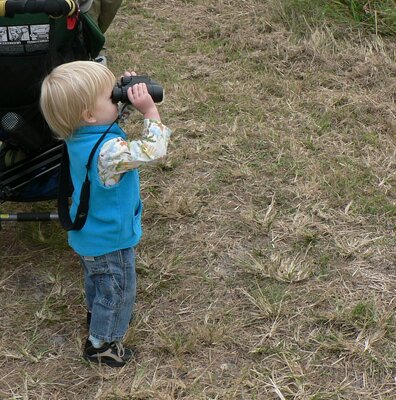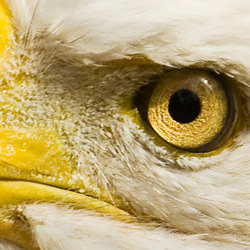The Conservation Lands Educational Program (CLEP) is designed to bring attention to local land conservation efforts. These trips are conducted on properties purchased to protect natural resources and will be led by a representative who will discuss ecological features and history. CLEP trips will be educational experiences, so the emphasis will be on much more than birding.
Meet trip leader Michael Drummond at the Sunoco gas station at the flashing light in Micanopy on US-441 and carpool to Barr Hammock. Barr Hammock forms a land bridge between Ledwith and Levy Prairies, and is a county jewel that provides habitat for a wide diversity of upland and wetland species. We should see some migrant birds on this walk, but we’ll be looking at everything – trees, wildflowers, insects, reptiles, whatever we find.
Difficulty: 2 (may involve uneven terrain one to two miles).
Meet trip leader Adam Kent at the Tag Agency (NW 34th Street just south of US-441) to carpool. Entry fee $4 per vehicle. We’ll cover a variety of habitats in this walk, including marsh, field, deciduous forest, and Cellon Creek bottomlands. This is very near the peak of migration for warblers, thrushes, cuckoos, tanagers, and buntings.
Difficulty: 3 (may involve elevation change, uneven terrain, and/or walking distances greater than two miles).
Meet trip leader John Hintermister at the Tag Agency (NW 34th St. just south of US-441) and carpool to the Big Bend Wildlife Management Area for a full day of birding. The first destination will be the Road to Nowhere, a 12-mile road that traverses salt marsh and coastal hammocks. A large diversity of birds can often be seen along this remote road. The next stop will be Hagens Cove where shorebirds, wading birds (including Reddish Egrets), and migrant landbirds can all be observed. Bring water, bug repellent, and lunch
Difficulty: 2 (may involve uneven terrain one to two miles).

Join trip leader Dotty Robbins in the Target parking lot on Archer Rd. at 12:30 p.m. and then drive to Frank Rendon Park in Daytona Beach Shores. We’ll meet Michael Brothers of the Marine Science Center at 3:30 to stroll the beach and enjoy the spectacle of the many thousands of gulls that amass there. Michael will share his gull expertise at our program on February 7th, and this will be an opportunity to practice those identification tips.
Difficulty: 2 (may involve uneven terrain one to two miles)

This activity at the new and beautiful Depot Park in downtown Gainesville is for young people 6 to 18 who are accompanied by a parent or guardian. We will walk the park looking for birds using binoculars. You must be registered to attend. Register at audubonyouthbirding@gmail.com.
Saturday, February 18, 2017 from 9 to 11 a.m.

Family Birding opportunity! Meet guide Adam Kent at the Thomas Center in downtown Gainesville (302 NE 6 th Avenue) on Saturday, April 8 at 9:00 a.m. We will walk the Thomas Center grounds, city streets, and the Duckpond area looking for city birds and animals. Binoculars will be available for use. Please register for this event at audubonyouthbirding@gmail.com . Be sure to bring water and a hat.
Meet trip leader Mike Manetz in the parking lot at Kanapaha Botanical Gardens for a stroll through a beautiful 62-acre park marked by gorgeous gardens (including butterfly and hummingbird gardens), sinkholes, a man-made watercourse, and hardwood hammocks that host a wide variety of bird life. What can be more beautiful than springtime in the Gardens? Participants will be admitted to the park for half price ($4), but MUST be on time to get the group rate.
Difficulty: 2 (may involve uneven terrain one to two miles).

This field trip is geared for kids from 6 to 18. Northeast Park is a small, urban park in the heart of Gainesville that is home to a variety of songbirds, including at least 4 species of woodpeckers. The park provides the perfect setting to get acquainted with these colorful, animated birds.
Ted Goodman will be your guide for this trip. We’ll meet at the parking lot by the tennis courts at 9:00 a.m. for a brief introduction, followed by birding in the park. Loaner binoculars will be available on a first-come-first served basis. Drinks and snacks will be provided. For insurance reasons, all children must be accompanied by an adult. It is not necessary to preregister.
Peregrine Falcons migrate down the Atlantic Coast in fall, usually peaking in early October.
Meet trip leader John Hintermister at the Tag Agency and carpool to the hawk-watching platform at the north end of the park in hopes of seeing Peregrines. During the second half of the morning we’ll walk a woodland trail in search of fall warblers, tanagers, grosbeaks, and thrushes. Entry fee $3 per vehicle. Bring water and bug repellent. Lunch is at Cap’s on the Inland Waterway.
Difficulty: 2 (may involve uneven terrain one to two miles).
Web sites for GTM NERR: http://www.gtmnerr.org and http://www.dep.state.fl.us/coastal/sites/gtm/
Meet trip leader Trina Anderson in the parking lot at Kanapaha Botanical Gardens for a stroll through a beautiful 62-acre park marked by gorgeous gardens (including butterfly and hummingbird gardens), sinkholes, a man-made watercourse, and hardwood hammocks that host a wide variety of bird life. Participants will be admitted to the park for half price ($4), but MUST be on time to get the group rate.
Difficulty: 2 (may involve uneven terrain one to two miles).
Meet Rex Rowan in the Target parking lot and carpool to Cedar Key, a quintessential Florida birding destination where birders can often view shorebirds over one shoulder and songbirds over the other. Participants may want to stay in Cedar Key for lunch.
Difficulty: 1 (trip within easy access to vehicle and/or level terrain one mile or less).

Audubon EagleWatch is seeking volunteers to monitor Bald Eagle nests for the 2017-2018 breeding season. EagleWatch provides valuable information on nesting activity and the current trends of the Bald Eagle population in Florida. As a volunteer, you’ll be assigned to monitor one or more eagle nests in your vicinity. The data you collect helps eagle biologists determine the right conservation measures to ensure the success of the species in our state.
Go to this web site to register.
Meet trip leader Howard Adams at the trailhead of La Chua Trail on Camp Ranch Rd. La Chua is one of the area’s best birding hotspots and it supports a tremendous bird population including wading birds, waterfowl, raptors, warblers, and others. Resident species should be in the midst of nesting activities, and we may see a few migrants passing through. Entry fee for the State Park is $4 per vehicle.
Difficulty: 3 (may involve elevation change, uneven terrain, and/or walking distances greater than two miles).
Instead of the Lake Apopka Wildlife Drive (still closed due to continued flooding from Hurricane Irma), we’ll be birding the West Trail of the Newnans Lake State Forest, specifically the weedy sparrow field at the north end of the property. Recent trips have discovered remarkably large numbers of sparrows, up to nine species so far: Chipping, Field, Vesper, Savannah, Grasshopper, Song, Swamp, White-throated, and White-crowned. You can be sure that there are more to be found. If you want some practice with sparrows, this is the trip for you.
Directions: Drive east on University Avenue past Morningside Nature Center. About a mile past Morningside, State Road 26 curves left (while University continues straight to the shore of Newnans Lake). Stay on 26 for another mile and you’ll see the Newnans Lake State Forest sign on your LEFT. Make a left turn into the driveway and follow it to the parking corral. (There’s also a sign and a parking corral for the Pithlachocco Trailhead on the RIGHT side of the road. Don’t go there.) The official address is 1404 NE 55th Blvd, Gainesville, FL 32641, but check the map for the accurate location.
Trip Difficulty: 2 (We’ll walk a forest trail and grassy service road about a third of a mile to the field, then just amble around in the weeds looking for birds. Total walking distance for the day will probably be around a mile and a half or two miles).
Meet trip leader Felicia Lee at the trailhead of La Chua Trail on Camp Ranch Rd. La Chua is one of the area’s best birding hotspots and it supports a tremendous bird population including wading birds, waterfowl, raptors, warblers, and others.
Entry fee for the State Park is $4 per vehicle.
Difficulty: 3 (may involve elevation change, uneven terrain, and/or walking distances greater than two miles).
Meet trip leader John Hintermister at the Tag Agency on NW 34th St. just south of US-441 to carpool to the east coast. We’ll start at Fernandina Beach and work our way south. Possible Purple Sandpipers and scoters at Ft. Clinch State Park (entry fee $6 per vehicle). Then to Amelia Island for Red-throated Loon, scoters, Horned Grebes, and gulls. We’ll finish at Jacksonville’s Huguenot Park ($5 per vehicle) for shorebirds and other winter birds. Expect a full day of birding and some walking at various coastal sites.
Bring a lunch and warm clothes.
Difficulty: 3 (may involve elevation change, uneven terrain, and/or walking distances greater than two miles).
Meet trip leader Howard Adams at the trailhead of La Chua Trail on Camp Ranch Rd. La Chua is one of the area’s best birding hotspots and it supports a tremendous bird population including wading birds, waterfowl, raptors, warblers, and others. Resident species should be in the midst of nesting activities, and we may see a few migrants passing through.
Entry fee for the State Park is $4 per vehicle.
Difficulty: 3 (may involve elevation change, uneven terrain, and/or walking distances greater than two miles).
Meet trip leader Rex Rowan at the Tag Agency on NW 34th St. just south of US-441 to carpool to Jacksonville’s Huguenot Park, where we’ll look for shorebirds, gulls, and terns, all in their breeding plumage, and migrant songbirds, including Painted Buntings, at Ft. George Island. Admission to Huguenot is $5 per vehicle, $3 (exact change only) if we get there before 8 a.m.
Difficulty: 3 (may involve elevation change, uneven terrain, and/or walking distances greater than two miles).
Meet trip leader Rex Rowan at the parking lot of the Watermelon Pond WEA on SW 250th Street 2.0 miles south of SW 46th Avenue. We’ll be looking for open-country migrants like Western Kingbirds as well as winter arrivals like Savannah and Vesper Sparrows (and the season’s first Yellow-rumped Warblers!). Fall wildflowers ought to be blooming, and hopefully we’ll encounter a Fox Squirrel or two.
Difficulty: 3 (may involve elevation change, uneven terrain, and/or walking distances greater than two miles).